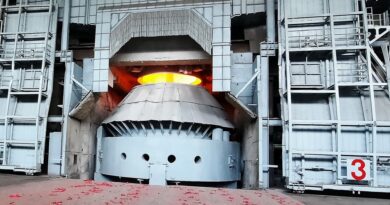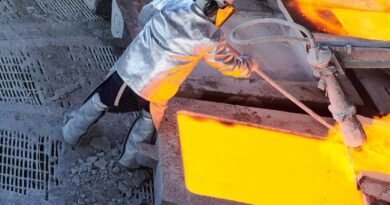Global titanium industry is on long-term growth trend
According to Roskill, the global titanium metal industry is on a long-term growth trend, and the 2014-2019 period saw rising output and trade along the whole supply chain. Exports of feedstocks increased significantly in 2019, with international sponge shipments estimated to have increased by around 20% y-o-y and exports of titanium scrap up by 14% y-o-y. Exports of titanium mill products have risen by 6.2%py on average since 2014, to reach almost 107kt in 2019.
Around half of all titanium demand comes from high-value aerospace applications and 10 years of continuous air-traffic growth over the 2010-2019 period has supported increasing levels of commercial airliner production.
However the situation changed suddenly in Q1 2020 following the outbreak of the Covid-19 coronavirus pandemic, and the commercial aviation and aerospace industries now face a period of unprecedented near-term disruption and uncertainty.
Many airline operators around the world have been confronted with significant financial challenges as a result of a drop in air travel, and declining profits will likely have implications for both existing and future aircraft orders, which may affect production ramp-up plans and, by extension, demand for aerospace materials such as titanium alloys.
The titanium metal supply chain is geographically concentrated. Production of titanium sponge is limited to Russia, Japan, Kazakhstan, China, USA, Ukraine, India and, most recently, Saudi Arabia, although Russia, Japan and China alone account for more than three quarters of global output.
Titanium slab and ingot production is similarly concentrated, with China, USA, Russia and Japan holding almost 90% of melting capacity in 2019. There is also a high degree of downstream integration into the production of mill products. The geographical distribution and limited number of industry participants partly reflects the history of titanium in military and aeronautical applications as well as the technical challenges and high barriers to entry associated with its production, particularly for aerospace grades which require industry qualification for use.
At present, the vast majority of titanium metal is produced using traditional manufacturing techniques, melting sponge and scrap to produce slabs and ingots which are processed into a range of mill product forms and then cut and machined into components. However, continuing advances in the field of additive manufacturing is generating increased interest in the direct production of complex net-shape components from powder or wire feedstocks, with the potential to vastly reduce material losses during part production.
The use of additive manufacturing in key industries such as aerospace is expected to grow rapidly over the outlook period, potentially moderating overall demand growth as titanium buy-to-fly ratios are gradually reduced. Conversely, as the process becomes more widespread and cost-efficient, a reduction in material costs could result in the expansion of titanium use in niche markets such as the automotive sector, where the metal’s excellent strength-to-weight characteristics are desirable but cost is currently prohibitive.




